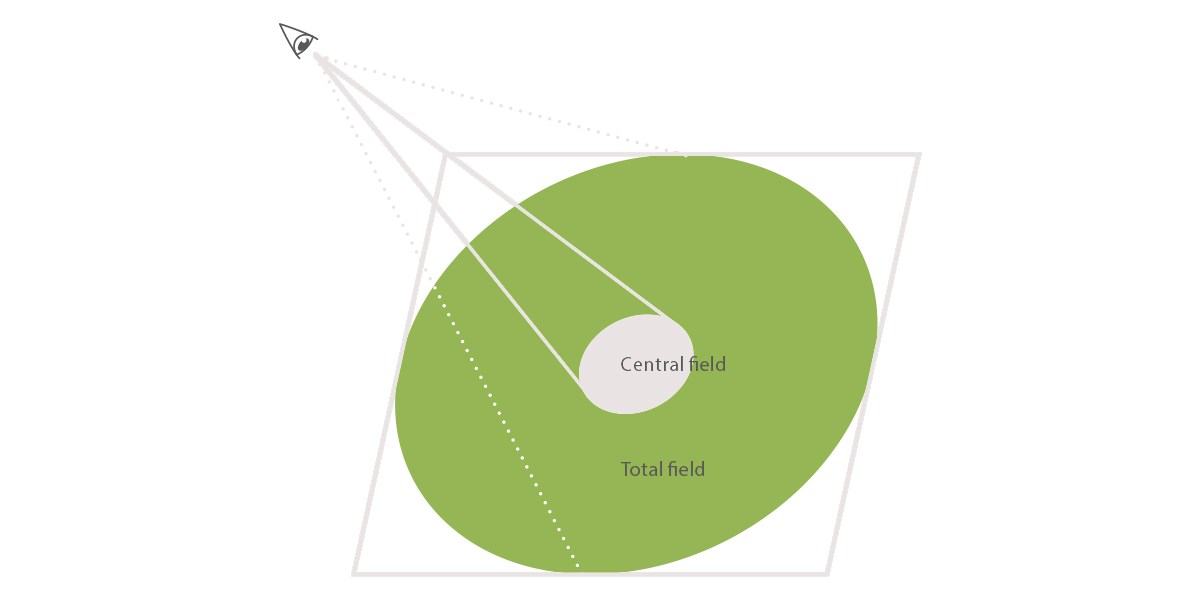Brighter lighting isn’t necessarily better
A correlation exists between reduced visual fatigue and diagnostic accuracy [1], performance [2] and safety [3]. These visual problems can place surgeons and their patients at risk [4].
Mitigating the impact of visual fatigue in the OR
Most people have experienced the symptoms of visual fatigue: eyes that feel sore, itchy, or dry. Sometimes our bodies compensate by producing excess tears, causing visual impairment.
But eye strain can also spark a cascade of full-body fatigue. In poor visual conditions, human posture becomes strained. We see this every day in the rounded shoulders and forward lean of laptop and mobile phone users. The postural changes caused by visual fatigue can cause up to three times as much musculoskeletal strain. [4] This poor posture leads to overall bodily fatigue, which is correlated with increased errors. [2], [3], [5]
Measuring the impact of visual fatigue
In 2015, Dr. Patrice Peyrat, a general surgeon at Léon Bérard Cancer Center (CLB) in Lyon, France, began to study ways to minimize the impact of visual fatigue in the OR.
Was brighter lighting the answer, or did the solution require better lighting? He began by speaking with Jean-Pierre Breysse, Senior Director Strategic Office, Marketing/Product Management at Getinge, who was interested in exploring how the LMD function of the PowerLED lighting family improved visual comfort.
Our knowledge on the topic was limited. We needed to involve vision professionals.
What is visual fatigue, and how could it be evaluated?
The first step was to understand the notion of visual fatigue: what was it, and how could it be evaluated?
“Our knowledge on the topic was limited,” said Dr. Peyrat. “We needed to involve vision professionals.” He contacted the Lyon School of Orthoptics at Claude Bernard Lyon 1 University and established a collaboration between the school and CLB. Orthoptics students contributed their thoughts and knowledge over a period of three years, culminating in a final thesis; Dr. Peyrat supervised their internship.
“In 2016… we structured the conditions for carrying out the tests and evaluating their relevance,” Dr. Peyrat explains. Study participants would be measured before and immediately after laparotomy procedures lasting at least three hours.
The series of tests took about 10 minutes, and included:
- A Serret test to identify contrast sensitivity
- Using a Maddox wing to measure phoria (eye misalignment), a test of oculomotor muscles
- Conducting a prism vergence test using a Berens prism bar to evaluate ocular misalignment
- Punctum proximum accommodation (PPA) under divergence or convergence
- An accommodative rock test, where the subject alternates between near and distance vision to measure ability of the eye to quickly focus and refocus
Subjects were observed under three different conditions: low intensity lighting, medium intensity lighting, and high intensity lighting. A significant difference was found between the tested subjects and the controls for both PPA and prism vergence.
The results were published in a poster at the Congrès de l’Association Française de Chirurgie (French Surgery Association Congress) in September 2018.
Brighter isn’t better for avoiding visual fatigue
Dr. Peyrat and his team discovered that visual fatigue could be minimized by limiting the contrasts in luminance that a surgeon experiences during a procedure. Luminance is the light emitted or reflected by the cavity. In surgery, deep tissue and bleeding can appear dark, while reflected surfaces of surgical tools can appear suddenly and brightly. These excessive variations of luminosity impair the surgeon's ability and comfort.
Dr. Peyrat’s team suggests maintaining significant ambient light, and never performing surgery in a dark room. More natural light is better for reducing fatigue.
Ways to reduce visual fatigue
- Begin the procedure at the lowest possible illumination setting and gradually increase the intensity as the depth of field deepens and darkens.
- Avoid too much focus on the brightest spot of illumination.
- Take care when using multiple surgical lights to avoid overexposing the surgical field . The lighting levels of two or more lights are added together to measure intensity.
- Minimize strong contrasts between the operating field and the ambient lighting of the room.

